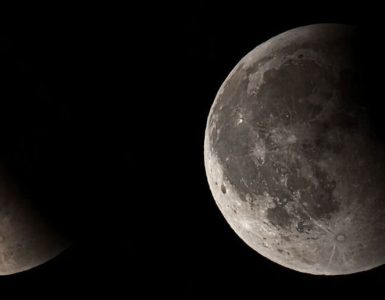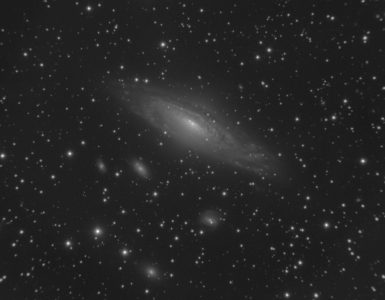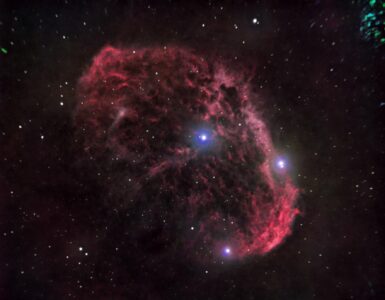
The phase of the moon at the beginning of May 2022 allowed to test the videography technique to capture high resolution and high contrast lunar photos. Thereby with an astronomical color camera (here: ASI183MCpro) and a suitable telescope optics videos of the moon with only 30s duration at first in the visible light were taken. The software “Autostackert!” selects the about 20% of the sharpest single images of the video, then superimposes and averages them exactly. The result is a color image of the moon, which however is still quite blurred because of the always present air turbulence. The latter shortcoming can be eliminated with the following trick: The infrared part of the moonlight is much less affected by the air turbulence than the visible part. Therefore, another video is recorded in which a suitable filter allows only the infrared part of the moonlight to reach the camera sensor. . After selecting and averaging the best individual images, one then obtains an infrared image of the moon, which is significantly sharper than the image obtained in visible light. The infrared image is converted into a monochrome image (“black and white image”), which contains only brightness information, but no color information. Now, finally, the infrared image is added as a “luminance image” to the color image obtained in visible light. The luminance image determines (only) the brightness of a pixel, the sharpness of the luminance image thus determines the final sharpness of the overall image.
Photos and text: Peter Stinner






Add comment